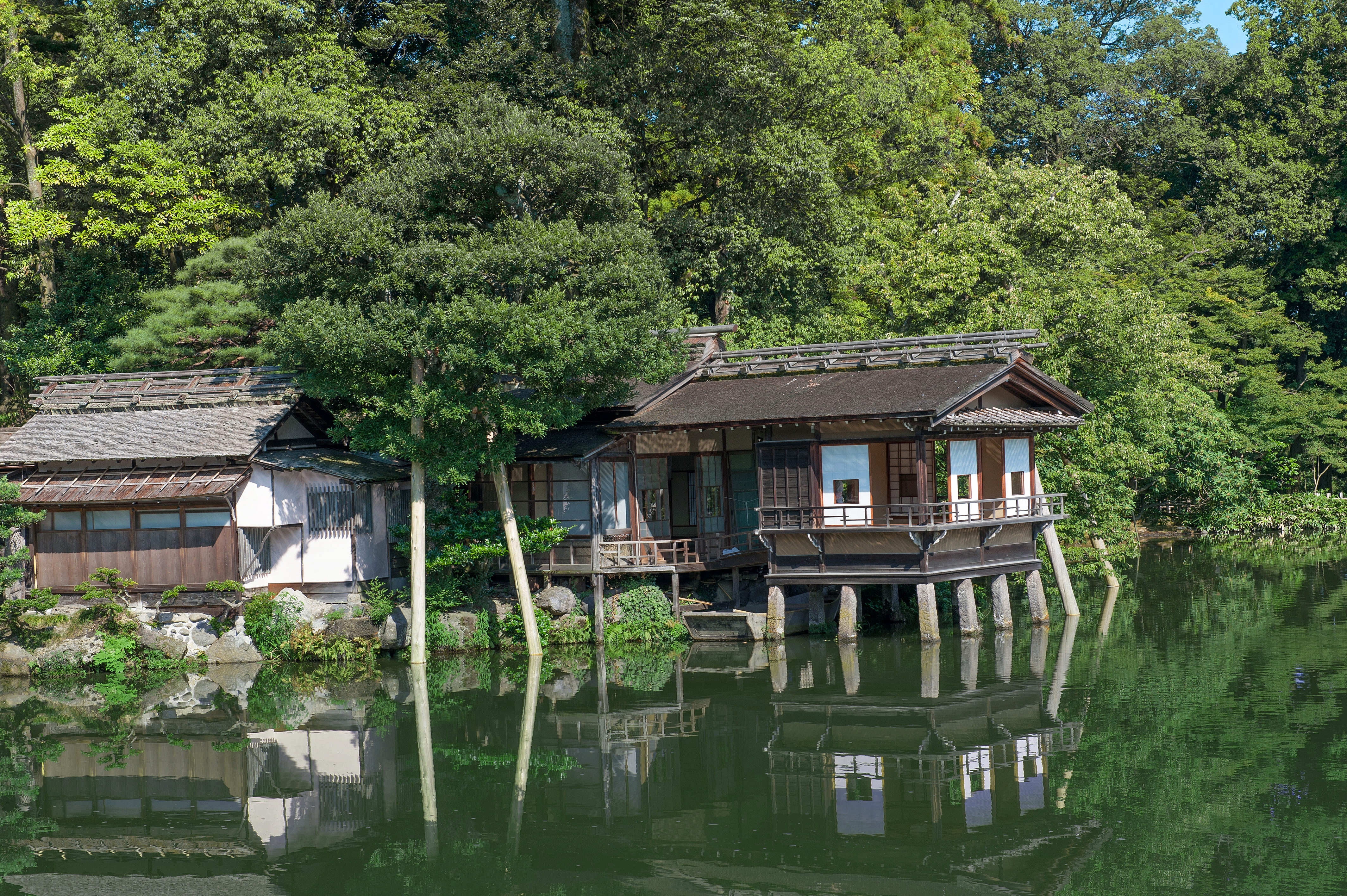One of the first things you see as you exit Kanazawa Station is a giant brass sculpture of a teapot sunken drunkenly into a mound of grass or, depending on your interpretation, tilting to fill a cup of the refreshing green brew the city is noted for. That a municipal piece of art should be dedicated to tea culture (made by artist Kazumasa Saegusa) says something about the drink's place in the history and contemporary life of Kanazawa, the capital city of Ishikawa Prefecture.
The influence of tea — in particular the tea ceremony and tea devotion — on the architecture of an older Kanazawa is evident in two gardens of particular distinction: Kenroku-en and Gyokusen-en. It's not clear who decides such things, but Kenroku-en, based on a classic circuit design, is ranked as one of Japan's three finest gardens. The judging system may be flawed, but it is a fine garden — a master design that embodies the six components from which its name is composed: solemnity, vastness, matchless planning, venerability, beauty of form and the coolness that comes from running water.
Implanted in the garden's deftly laid-out structure are several teahouses, among them Yugao-tei, a small thatched hut that faithfully follows traditional edicts of space. Typically, such structures attempt to reproduce, on a more modest scale, the vernacular folk architecture of minka, the grand, thatched farmhouses of rural Japan. In their diminished form they try to suggest the isolation of a hermit's forest hut. The exposed timber frames, thatched or shingled roofs and walls finished in rough, textured mud plaster, may seem rustic, but these structures are highly refined and, in the contemporary age, extremely costly to construct. Kenroku-en's popular Shigure-tei is a larger affair, with a broad view from the main chamber onto an expansive garden within a garden, replete with its own winding brook.



